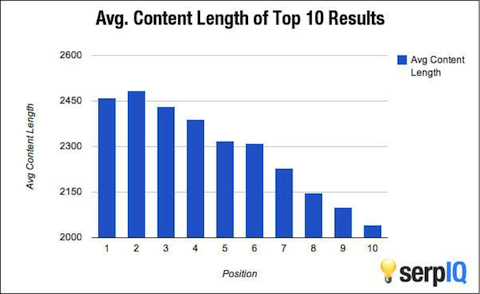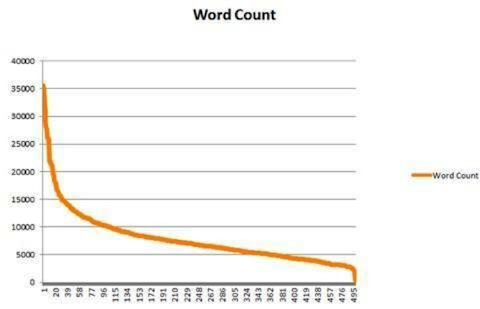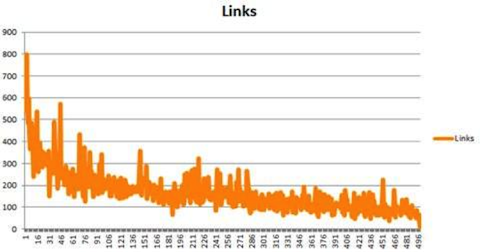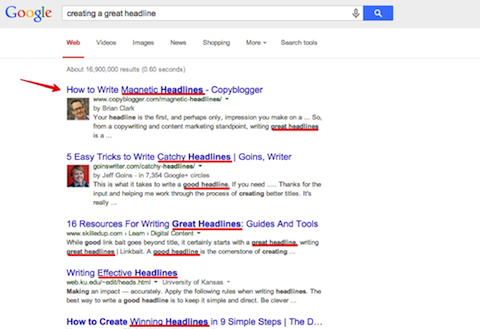How hard could it be to write a blog post? If a teenager can do it, you can too, right?
Writing a blog post isn’t hard, but writing a great blog post that readers finish, share, and trust takes real craft. Below are 22 actionable tips to help your posts stand out, satisfy reader intent, and earn traffic over the long term.
22 Steps to Write a Blog Post
Here’s the process you should follow whenever you’re writing a new blog post:
- Blog on your passion
- Break with your old ways
- Know what you want to write about
- Find popular topics to blog about
- Create an awesome title
- Hook your readers
- Create a conversation
- Open up
- Longer content is usually better
- Make sure what you write is original
- Provide practical advice and relevant research
- Use the proper URL structure
- Use a variety of related keywords in your post
- Use headings, bullets, lists, and block quotes
- Increase your font size and spacing
- Link to other related posts
- Link to valuable external resources
- Use images and videos (but not too many)
- Do not clutter your blog with call to actions or advertisements
- Correct any spelling, grammar, or factual errors
- Get someone else to read your post before you publish
- Write a conclusion (like this one)
1. Blog On Your Passion
Blogging feels like a chore when you don’t care about the topic. Choose a subject you’re genuinely curious about and willing to keep learning. Passion sustains consistency, which is what builds an audience.
Don’t pick a topic you think you like. Pick one you can talk about for years, share real experiences from, and improve at over time. That enthusiasm shows up in your examples, stories, and depth—and readers notice.
2. Break With Your Old Ways
Remember term papers? Forget them. The web rewards clarity, brevity, and usefulness—not formal essays. Write like you talk to a smart friend. Keep sentences tight. Cut filler.
You aren’t writing a paper—you’re starting a conversation.
If our posts sounded like lectures at you instead of chats with you, you’d bail. Your readers will too. Talk to people, not past them.
3. Know What You Want To Write About
Before the first sentence, know your endpoint. Define the reader’s goal, the problem you’ll solve, and the one takeaway they should remember. Jot a quick outline: intro, 3–6 main points, and a clear wrap-up.
Spontaneity is great for brainstorming; it’s terrible for publishing on time. A simple brief (topic, target reader, search intent, angle, and examples) saves hours and keeps your post focused.
You’re busy. Plan the path, then write it.
4. Find Popular Topics To Blog About
List the leading blogs and communities in your niche and scan them weekly. Look for patterns in what earns discussion, links, and shares. Pay attention to questions in comments, forums, and social threads—those are content prompts.
As you browse, note social proof (shares, comments) and search intent (how-to, comparison, checklist, opinion). Keep a spreadsheet of high-interest topics and angles you can improve with deeper examples, fresher data, or clearer steps.
Capture posts with strong engagement as future ideas, but aim to add something new: a better tutorial, original data, a case study, or a contrarian angle. That’s how you earn attention instead of copying it.
5. Create An Awesome Title
Don’t start writing until you have a title that’s specific, useful, and true. The best headlines promise a clear outcome and include the main keyword naturally—especially near the beginning.
Example: targeting “cake baking tips”? “25 Incredible Cake Baking Tips for Perfect Layers Every Time” beats “Cake Baking Tips.” Numbers add specificity, and a benefit (“perfect layers”) moves people to click.
Aim for clarity over clickbait. If you can test headline variants in email or social, do it—your open/click rates will tell you which promise resonates.
6. Hook Your Readers
You have seconds to earn attention. Lead with a problem readers have, a bold promise, or a short story that tees up the solution. Put your primary keyword early for relevance, but keep it natural.
From a search perspective, early relevance helps; from a reader perspective, a compelling setup keeps them scrolling.
Here’s an example of an intro that pulls readers in:
How hard could it be to write a blog post? If a teenager can do it, you can too, right? Writing one is easy. Writing a great one that people finish and share is the challenge—and this post shows you how.
In that short paragraph we:
- Start a conversation with “you.”
- Lower the barrier (“you can do it”), then raise the stakes (“great” is different from “good”).
- Preview the payoff so readers know what they’ll get.
Your voice is your own. Use these elements—problem, promise, preview—to craft an opening that fits your style and keeps people reading.
7. Create A Conversation
We use “you” and “I” because it feels like a chat. Long blocks of formal text are exhausting online. Conversational posts are easier to read, easier to remember, and easier to act on.
We’ve written this way for years to make our content personable and relatable.
We haven’t A/B-tested “essay” vs. “conversation” because we wouldn’t publish essays—but we know conversational writing improves readability and engagement.
Readers tell us that approachable tone helps them digest complex topics more easily.
Here’s the practical benefit: when you sound human, people comment, ask questions, and share their outcomes—giving you feedback loops for better content.
I just wanted to say thanks for all of the blog posts you have written. They are insightful and have helped me learn online marketing. Your blog is really easy to read and digest the information.
No need for a response.
Cheers!
Ask a simple question near the end of your post, and you’ll get more comments and longer on-page time. Then reply. That dialogue brings readers back.
If a post you loved ended with a question, wouldn’t you answer?
Most readers will—especially when you make it easy to jump in.
Questions encourage comments, extend session time, and give you ideas for follow-up posts people actually want.
8. Open Up
How much do you know about most bloggers? Usually not much, right?
A photo and a one-line bio aren’t enough to build trust. Create an About page that shares who you are, what you’ve done, and why you write. Be specific and real.
Your audience connects with people, not logos. Tell the stories behind your lessons—wins, mistakes, and what changed because of them.
If you run a team or corporate blog, give each author a bio that highlights experience relevant to what they write.
To create an effective About page, consider:
- Tell your complete story – from early days to today, share the key moments that shaped your expertise.
- Don’t hold back – your struggles and pivots matter; they make your advice credible.
- Include a picture – real photos help people connect; a tasteful illustration works too.
- Talk about your goals – share what you’re building next and how readers can follow or help.
9. Longer Content Is Usually Better
All else equal, comprehensive posts tend to perform better: more search visibility, more links, and more shares. But “long” only wins when it’s genuinely helpful and satisfies the query.
Here’s why depth often wins: it lets you cover intent fully, answer related questions, and include examples, steps, and visuals—all of which keep readers engaged.
Historically, studies have shown a correlation between higher rankings and longer content. That relationship still holds when the content is useful and well-structured.
SerpIQ studied search results rank based on content length. Here’s what they found:

Top results often have more words because they answer more questions. Length alone isn’t a ranking factor; usefulness is.
Search engines index titles, headings (H1, H2, H3, etc.), metadata, and alt text on images. More high-quality content means more opportunities to be discovered for relevant searches.
Different content types get indexed—titles, headings, meta descriptions, and image alt text among them.
The more quality you add, the more queries you can match. Pack your post with value, not fluff.
Longer posts also tend to attract more backlinks because they become reference resources people cite.
We’ve seen long, in-depth guides earn links for years. Here’s historic data from a Moz test:

The correlation is clear: substantial content earns more links.

More links typically mean better visibility, which leads to more readers and conversions—if the page actually helps them.
Shareability also increases with depth. Readers share posts that solve real problems, include examples, and feel “bookmarkable.”

While word count isn’t a goal by itself, posts that cross 1,500–2,000 words and stay focused on the reader’s task often land in that “golden share zone.”
Our long-form posts tend to receive more social engagement than shorter ones. In practice, depth + clarity beats brevity that leaves questions unanswered.
Length is one factor among many. Consider these as you decide how deep to go:
- Substance – what’s the exact problem you’re solving? Say what matters; skip what doesn’t.
- Style – some topics suit quick hits; others need a full walkthrough. Match depth to the task.
- Frequency – if you publish weekly, deeper posts may beat daily skims. Great content takes time.
- Format – use subheadings, images, and short paragraphs. Break content into scannable chunks.
- Purpose – are you educating, comparing tools, or driving signups? Purpose determines length.
- Audience – write for their needs, knowledge level, and use case—beginners need more context.
- Medium – video, infographics, and tools change word count math. Use the best medium for the job.
Bottom line: depth wins when it helps readers accomplish something. Don’t add words—add value.
10. Make Sure What You Write Is Original
Your content must be genuinely original—no plagiarism, no lightly rephrased copy, and no self-duplication across multiple posts. Unique insights, examples, and experiences separate you from look-alike articles.
Avoid redundancy on your own site, too. If two articles cover the same ground (e.g., “14 SEO copywriting tips” and “SEO copywriting advice”), consolidate or give each a distinct angle and purpose.
11. Provide Practical Advice And Relevant Research
Think in terms of outcomes. Identify a specific problem and give step-by-step instructions, checklists, examples, and templates readers can apply immediately. Show screenshots, code snippets, or before/after results when relevant.
Original or first-party research is even better. Run a survey, analyze anonymized datasets, document experiments, or conduct interviews—and explain what the findings mean in practice.
You can also synthesize credible sources to produce a new angle. As Search Quality Strategist Kaspar Szymanski notes:
Survey or original research results can serve the same purpose, if they turn out to be useful for the target audience. Both methods grow your credibility in the community and increase visibility. This can help you gain lasting, merit-based links and loyal followers who generate direct traffic and “spread the word.” Offering a number of solutions for different problems could evolve into a blog which can continuously affect the site’s reputation in a positive way.
Before drafting, search for similar posts. Can you narrow the scope, add missing steps, or contribute data and examples others don’t have? Depth and distinctiveness are what make your piece worth ranking and sharing.
12. Use The Proper URL Structure
Keep slugs short, descriptive, and lowercase. Include the primary keyword naturally. Hyphens beat underscores. Avoid dates unless necessary, and drop filler words that don’t add meaning.
For example, if your post is about the best web hosting, a clean URL like https://www.quicksprout.com/best-web-hosting/ is ideal. It’s easy to read, easy to share, and clearly aligned with the topic.
13. Use A Variety Of Related Keywords Within Your Post
Cover the topic thoroughly with natural variations, synonyms, and related concepts. You’re writing for people, but depth and variety help you appear for more relevant searches.
Say you’re writing about “writing great headlines.” In a short post, you might only use that exact phrase. In a detailed guide, you’ll naturally include related queries:
- “how to craft a killer headline”
- “creating great headlines”
- “writing better headlines”
- “tips for a great opening line”
- “an effective title”
- “the title of your post is important”
- “it’s a winning headline”
- “because these words in the title…”
- “those first words and their magnetic power”
- “sizzling hot titles”
- “some of the most popular headlines…”
Google matches pages to meaning, not just exact phrases. When you thoroughly address a topic—including common questions and subtopics—you’ll show up for a wider set of searches.
We googled “creating a great headline” and got these results:

Notice how results include “magnetic” and “catchy”—different words, same intent. Write to the intent and you’ll naturally cover the language people use.
When you write longer posts, you can also target long-tail queries and related entities. The more helpful detail you include, the more relevant searches you can earn.
14. Use Headings, Bullets, Lists, And Block Quotes
Why are books easy to read? Because structure guides you. Online, headings, bullets, lists, and quotes make scanning effortless—and that improves completion rates.
We’ve tested layouts with and without clear subheadings and lists. Posts with strong structure consistently keep readers on the page longer.
Organizing with headings and lists can increase average time on page because readers can find what they need fast.
The easier your content is to scan, the more likely readers are to finish it.
Use one H1 (your post title), H2s for main sections, and H3/H4 for subsections. Include your primary keyword or a close variation in at least one H2 where it fits naturally.
15. Increase Your Font Size And Spacing
Readable typography is an instant UX win. Use a legible font family, clear contrast, and generous white space so readers can relax and focus.
We’ve seen time on page improve when body text isn’t cramped. As a rule of thumb, body copy at ~16–18px with 1.5–1.8 line height is a solid baseline on most sites.
Going much smaller strains eyes; going much larger can slow scanning. Test on mobile—most readers are there—and adjust until reading feels effortless.
16. Link to Your Other Related Posts
Internal links help readers discover more of your best content and help search engines understand how your pages relate. Link from relevant phrases to relevant posts—especially pillars and updated guides.
Descriptive anchor text beats “click here.” Interlink clusters (topics and subtopics) and you’ll keep readers on site longer while strengthening the pages you care about most.
17. Link To Valuable External Resources
When another site explains a point better or provides a primary source, link to it. Readers appreciate it, and it signals that you care about accuracy.
For example, if you reference dry measuring cups and want a quick primer you don’t have, link to a clear, reputable explainer. The goal is to help readers, not keep them captive.
Linking to authoritative resources gives readers next steps and context. Use descriptive anchors and choose sources you’d be proud to cite.
18. Use Images And Videos (but not too many)
Thoughtful visuals boost comprehension and retention. Add images, diagrams, or short videos when they clarify a step or show a result. That engagement often leads to better performance in search.
Write meaningful alt text that describes the image for accessibility and context. Captions can add quick value, too.
Don’t overload the page with decorative images that interrupt reading. Use visuals with purpose, compress them for speed, and let the words do the heavy lifting when they should.
In our scroll and click-tracking tests, posts with purposeful visuals performed better than text-only articles—but too many unrelated images reduced reading depth. Be selective and performance-minded.
Use images when they add clarity. Your goal is to help readers finish the post and succeed—not to distract them.
19. Do Not Clutter Your Blog Post With Call To Actions Or Advertisements
Step back and scan your page. Where do your eyes go first? Your design should make the primary action obvious and keep the reading path clean.
Great content can get buried under pop-ups, auto-playing videos, and ad noise. Keep layouts simple, limit CTAs to one primary action, and let readers consume the value you promised.
20. Correct Any Spelling, Grammar, Or Factual Errors
Sloppy writing erodes trust. Years ago, Googlers even noted correlations between quality signals and better outcomes in search. Either way, accuracy and clean copy are table stakes for credibility.
Always run a spelling and grammar check, verify names and numbers, and update stale facts before publishing. Tight editing is an advantage most competitors skip.
21. Get Someone Else To Read Your Post Before You Publish
Fresh eyes catch gaps and assumptions you miss. Ask a teammate or knowledgeable friend to read your draft and flag unclear steps, missing definitions, or weak examples.
Even one extra reviewer improves quality. If possible, get a subject-matter expert to skim for accuracy and a generalist to skim for clarity—then adjust accordingly.
22. Write A Conclusion (Like This One)
We add a clearly labeled conclusion so skimmers can grab the gist fast and decide to read deeper. It trains readers to scroll and gives them the key takeaways in one place.
Our tests showed that clear conclusions increase scroll depth and encourage readers to loop back to the top to read the full post.
Instead of repeating everything, use your conclusion to reinforce the promise, list quick next steps, and invite conversation.
We take a three-prong approach to our conclusions:
- Keep it simple – short, scannable, and focused on the outcome.
- Add your final thoughts – share one fresh insight or a quick checklist readers can act on now.
- Leave things open – end with a genuine question to spark comments and learn what to write next.
